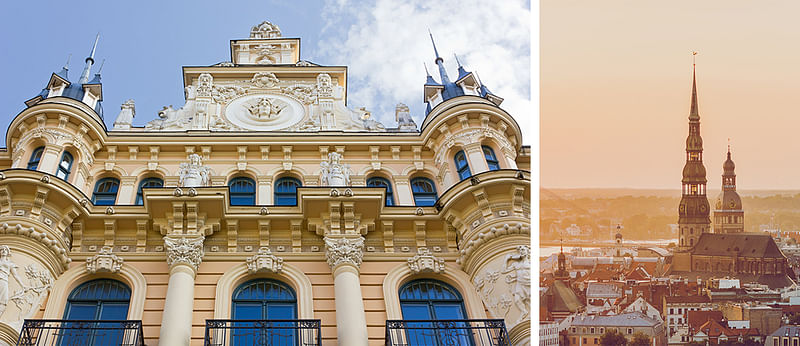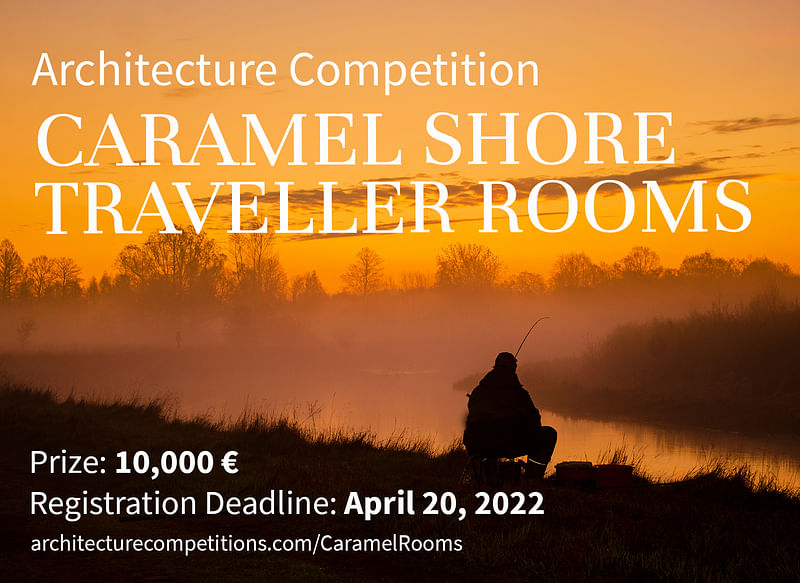Caramel Shore Traveller Rooms
Registration Deadline: Wednesday, Apr 20, 202210:17 AMBST
Submission Deadline: Wednesday, May 25, 202210:17 AMBST
Related
Rural tourism has been a growing trend in recent years. Apart from the blip caused by the Covid-19 pandemic, more and more travellers had been seeking out authentic experiences in nature. This ranges from a night under the stars to living with and helping local communities. It’s a chance for smaller communities to earn an income from rural tourism, everything from organic farms to local shops and regional distilleries.
Modern travellers are putting serious thought into how they can positively or negatively impact environments and communities. As one of the greenest countries in Europe, both literally and figuratively, Latvia is growing in popularity as a destination for rural tourism.
For the Caramel Shore Traveller Rooms competition, Bee Breeders Architecture Competition Organisers are asking participants to design a prototype for a sleeping cabin to be located in the Latvian town of Skrunda on the golden-sand shores of the Venta river. The Venta river is home to the widest waterfalls in Europe, and its brightly yellow caramel color sands make it an idyllic spot for rural tourists to visit.
As the winning design will be considered for construction, project submissions should be unique, creative, environmentally and sustainably planned.
PRIZES
3 winning proposals, 3 special award recipients and 6 honourable mentions will be selected. Bee Breeders will award a total of 10,000 € in prize money to competition winners as follows:
1st Prize - 5,000 €
2nd Prize - 2,000 €
3rd Prize - 1,000 €
“Caramel Shores" Favourite Award - 1,000 €
ARCHHIVE Student Award - 500 € + 50 € gift card at ARCHHIVE BOOKS
AAPPAREL Sustainability Award - 500 € + 50 € AAPPAREL.com Gift Card
+ 6 honourable mentions
COMPETITION SCHEDULE
Final Registration: JANUARY 27 – APRIL 20
Final registration deadline: APRIL 20 , 2022
Closing date for submission: MAY 25, 2022 (11:59 p.m. GMT)
Announcement of the winners: JULY 6, 2022
More: https://architecturecompetitions.com/vancouverchallenge/
JURY:
Nancy Beka, Studio Edwards
Willem van Bolderen, Studio Puisto Architects Ltd
Mari Hunt, b210
Suzanne Hunt, Suzanne Hunt Architect
Pablo Larroulet, LARROU ARQ - Pablo Larroulet Arquitectura
Marco Lavit , Atelier LAVIT
Jordi Riembau Ribot, Nordest architecture SLP
Miguel Rusca Mestre, Nordest architecture SLP
Ahti Sepsivart, architect

Latvia has been described as a vast, unspoilt parkland that is a tapestry of sea, lakes, and woods. With only one major cosmopolitan city, the capital city of Riga, Latvia is a small country that provides its visitors and inhabitants with a vast amount of personal space. Left - Aerial view of the Venta river bends © Bargais; Right - Coast of Baltic Sea in Latvia © Karlis Ansens

Latvia has yet to be properly discovered by the large tourist crowds, with the capital city of Riga still being the country’s main tourism hub. Left - Facade of an Art Nouveau Palace in Riga © Mauro Carli; Right - Riga old town skyline © A. Aleksandravicius

The Venta river is home to the widest waterfalls in Europe, and its brightly yellow caramel color sands make it an idyllic spot for rural tourists to visit. Skrunda is a town in Latvia located roughly 150 km west of the capital city Riga. Its earliest references date back to 1253. Left - Aerial view of Skrunda town and Venta river © Bargais; Right - Lutheran church in Skrunda Municipality © Eriks Z

The most note-worthy aspect of Skrunda is the existence of a former Soviet secret city nearby, Skrunda-1. In its time, it housed two major radar installations during the Cold War. Left - Inside abandoned military building in Skrunda-1 © Martins Vanags; Middle - Abandoned military buildings in Skrunda-1 © Baigozin; Right - Abandoned white brick multi-storey house and rusty living area road sign © Bargais

Traditional Latvian architecture in the countryside and villages outside of the country’s main cities has long been constructed from wood. For centuries, Latvian villagers constructed their homes from timber that could be collected from nearby forests, and covered them with thatch roofing. While the homes were small and modest, they still had some architectural details that made them unique, such as the iconic forms of the gabled roofs. Left - Traditional reed roof decoration © ingridagrants Right - Two vernacular homes with iconic roofs © Alfiya Safuanova

COMPETITION SCHEDULE
Final registration deadline: APRIL 20 , 2022
Closing date for submission: MAY 25, 2022 (11:59 p.m. GMT)
Announcement of the winners: JULY 6, 2022

Share
1 Comment
naxa · Dec 20, 21 2:22 PM
perfect approach for time beingComment as :